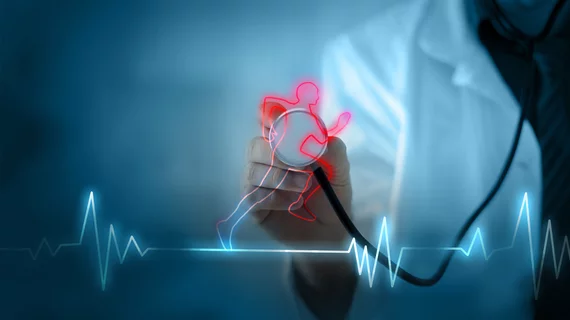Researchers from the Thayer School of Engineering at Dartmouth College have developed a dime-sized innovation they claim converts the heart’s energy into electricity to power implantable devices like pacemakers and defibrillators, potentially saving cardiovascular patients the time, money and stress of repeat surgery.
A study funded by the National Institutes of Health and published in the latest edition of Advanced Materials Technologies details lead author John X.J. Zhang et al.’s strategy to modify pacemakers with their new technology by adding a thin layer of polymer piezoelectric film called PVDF to existing devices.
“We’re trying to solve the ultimate problem for any implantable biomedical device,” John X.J. Zhang, an engineering professor at Dartmouth, said in a release. “How do you create an effective energy source so the device will do its job during the entire lifespan of the patient, without the need for surgery to replace the battery?”
Those surgeries can cost patients tens of thousands of dollars, but they’re unavoidable since many implantable devices run on batteries that need to be replaced every five to 10 years, the authors said. In addition, battery replacement surgery raises a patient’s risk for infection and other procedural complications.
Zhang and colleagues’ innovation would solve the surgery problem with their novel PVDF design, a structure within a dual-cantilever structure that wraps around a pacemaker lead with two free ends sticking out to harvest energy from the heart’s motion. In the journal, the authors reported the maximum electrical output of the technology yields 0.5 V and 43 nA under the frequency of 1 Hz.
The team also noted their design is scalable; by connecting two similar units in parallel, the simultaneous vibration can contribute to energy conversion.
“We’ve completed the first round of animal studies with great results, which will be published soon,” Zhang said. “There is already a lot of expressed interest from the major medical technology companies, and Andrew Closson, one of the study’s authors working with Lin Dong and an engineering PhD innovation program student at Dartmouth, is learning the business and technology transfer skills to be a cohort in moving forward with the entrepreneurial phase of this effort.”
Zhang et al. are only three years into a five-year grant from the NIH, according to the release. The next two years, plus added time to finish the preclinical process and gain regulatory approval, could put a self-charging pacemaker on the market in five years, Zhang said.

